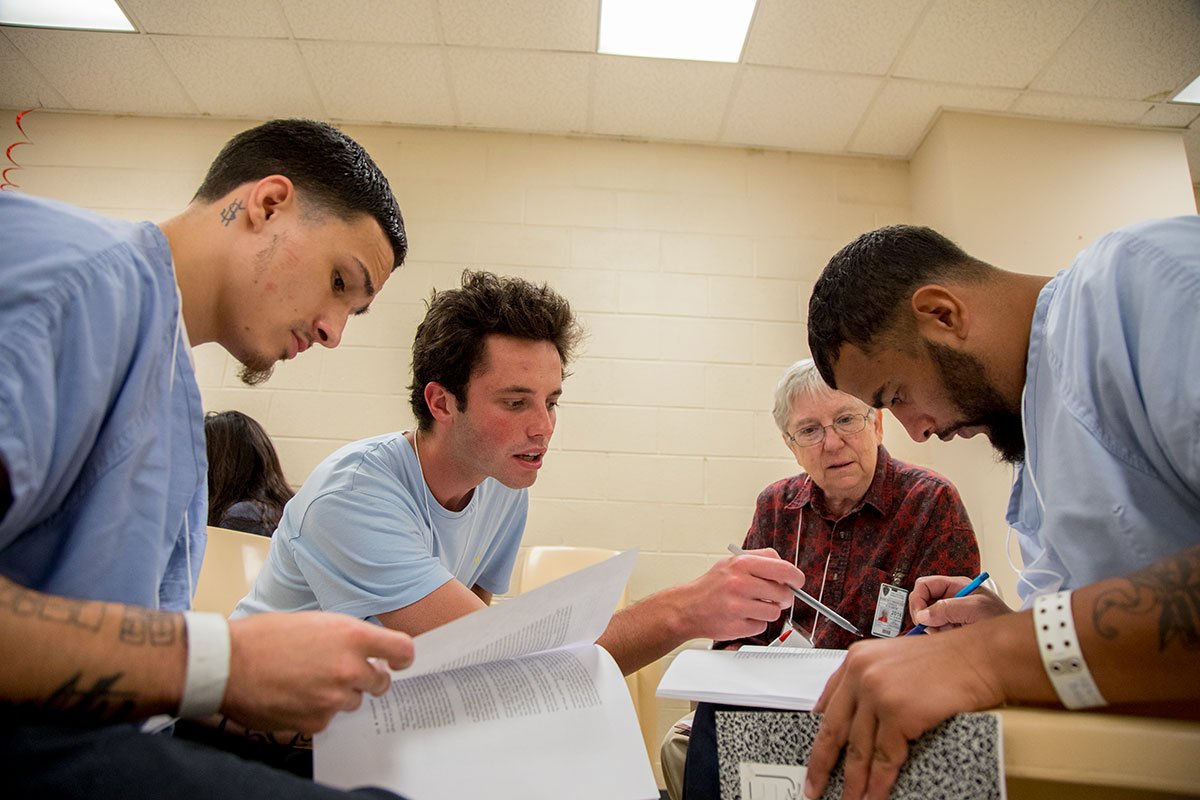
Lumina Foundation is expanding our efforts to promote education among present and former prison inmates—a program that makes sense both on economic and humanitarian grounds.
We’re guided by the goal of ensuring that 60 percent of working-age adults hold a high-quality postsecondary credential by 2025. The nation’s attainment rate is only at 46.9 percent now, and there’s a sense of national urgency because we know that most good jobs already require education and training beyond high school, and that trend is increasing.
That’s the economic piece: Our country can’t compete globally or expand opportunity without a more educated workforce. And it only makes sense to cultivate the talent that will drive that workforce wherever we can grow it.
That’s partly why Lumina has launched new work to fund organizations that help individuals with a history in the criminal justice system obtain access to quality postsecondary education programs.
When we started this work nearly two years ago, my colleagues and I had to admit that we were embarking upon a new journey. We had little expertise with prison education, incarcerated populations, or policy barriers that prevent those who are released from pursuing additional educational opportunities. And there’s been much to learn along the way.
We also lacked an action plan or a roster full of contacts that could help us chart our path forward. But we were driven by the belief that this was not only a just and fair endeavor, but that it supported the Foundation’s north star, the goal of 60 percent attainment by 2025.
Engaging in this work also reveals the very real economic and humanitarian gains of prison higher education that support another Lumina commitment: Racial and economic justice. For the sake of the nation’s future, we must foster talent wherever we can find it—and in so doing, we must eradicate longstanding, pervasive gaps in attainment by race and ethnicity.
We can see these gaps plainly, as postsecondary attainment rates vary from 62 percent for Asian/Pacific Islanders, 46 percent for whites, 30 percent for African Americans, 24 percent for Hispanics, and 22 percent for American Indians.
Although we were low-key about our foray into prison higher education—making only a two-sentence mention of it in our 16-page strategic plan, released in late 2016—I soon received an enthusiastic call from Doug Wood, a program officer at the Ford Foundation. Doug had built Ford’s higher education in prison strategy from the ground up and was enthusiastic that we had decided to join the effort. He offered to coordinate a meeting where we could get to know some of his most effective and influential partners and grantees. That meeting led to what has become Lumina’s strategy to expand postsecondary opportunities for the incarcerated and recently incarcerated, and we’re very grateful to Doug for all his help.
Since that first meeting we’ve met other funders interested in prison education and assembled an advisory board of experts (which includes individuals who took coursework while incarcerated). This board is helping us build out and implement our plan thoughtfully, respectfully and in a way that will deliver meaningful outcomes.
We’ve also made two initial investments in this area. The first will support the development of guidelines for establishing high-quality, broad-access education programs offered in prison. The second is to the Alliance for Higher Education in Prison, a professional organization that provides action-oriented research and development opportunities to individuals doing work in this field.
We think we can make an important impact here. About 600,000 people are released from state and federal prisons each year—most without the training needed to avoid reoffending or to obtain solid, living-wage jobs. Meanwhile, research shows that prison higher education is one of the largest influences in reducing recidivism rates and thus represents a substantial payoff to the public in terms of crime reduction.
And while recidivism is the indicator most commonly used to demonstrate whether someone who has been released is successful, we hope to highlight other indicators in the future.
The limited prospects for thousands of current and former inmates demonstrate a startling unfairness born from years of inequitable social, cultural and criminal-justice policies. Elements of this system are crippling America’s potential by depriving us of the critical talent we need to compete in the world.
We know, as in every aspect of public policy, there are differences of opinion. We welcome a debate about how the goal of 60 percent attainment by 2025 can be reached, and why our commitment to increasing postsecondary attainment among those who are or have been incarcerated can be addressed as a part of a much broader strategy.
In the meantime, we’re guided by the conviction that everyone deserves the chance to compete and achieve, and that our country can’t reach our economic potential—and our aspirations for a just and fair society—until we commit to the success of all people.
Danette Gerald Howard, Ph.D. is Lumina’s senior vice president and chief strategy officer. She oversees several of Lumina’s key strategies including work in both state and federal policy and the Foundation’s growing national convening function. She also leads the Foundation’s efforts to mobilize and engage employers, metropolitan areas, higher education institutions and other key actors with a stake in postsecondary attainment.
